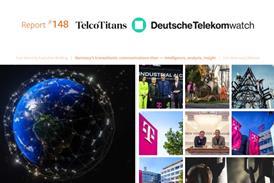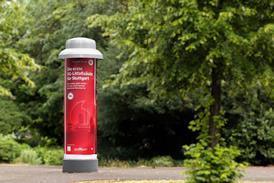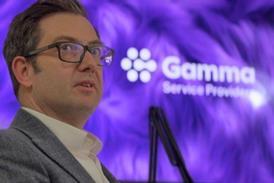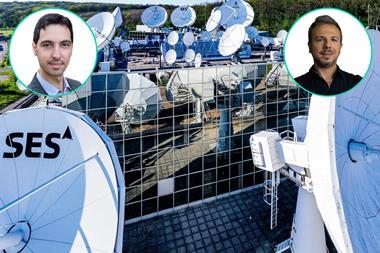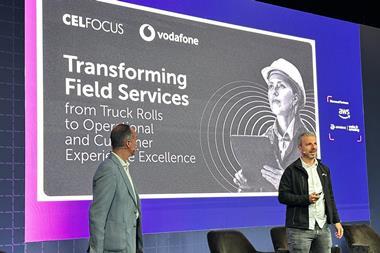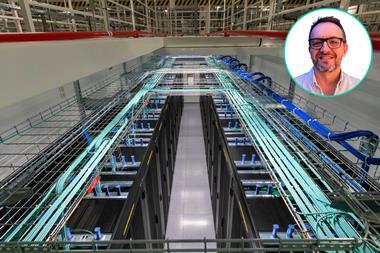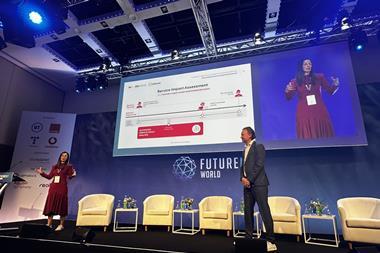- Celfocus’s domain authority Carla Penedo considers how complexities presented by converging networks and conflicting generations of technology can be tackled through AI and automation, as telcos pursue autonomous operations goals.
- Network digital twins are strategic enablers to address increasing network complexity and facilitate cross-domain analysis, providing deep insights into network behaviour and accelerate the journey toward autonomy.
- Agentic AI is the next step in AI strategy, bridging intelligence and execution to achieve complex goals. It is transforming the operating model by fostering a symbiotic collaboration between engineers and technology — key to the cultural change needed for the operator’s digital journey.
- A keen focus on business objectives and picking the right tools will help operators make meaningful operational, customer and financial gains from increased automation.
- Partnerships continue to grow in relevance as networks become cloud native, data-centric and AI‑enabled, with clear understanding of both the hyperscaler world and the needs of the telco sector critical to delivering effective joint projects.

Carla Penedo says Celfocus has always been ahead of the game in a still evolving field.
Her enthusiasm for artificial intelligence was clear years before assuming the role of Executive Director of Cognitive Automation at European telecoms system integrator Celfocus, or her recent naming as one of Total Telecom’s inaugural Top 20 Telco AI Champions.
Carla’s computer science degree saw her specialise in AI and during this time she was a competitor in RoboCup, an international robotic competition established in 1997. The goal is to develop robots capable of meeting the physical and cognitive challenges of fluid and dynamic team sports, thereby advancing the capabilities of AI and robotics in an academic R&D environment.
“The original mission was to have a team of AI robots capable of playing and winning against the human soccer World Cup Champions by 2050”, she explains, while reflecting on how research on AI technology has since influenced her own career and upended business models across the global economy — “it has been quite a ride since those university times”.
Carla is today in a position to maximise her experience and that of the wider Celfocus team. She is even more excited about the opportunity to innovate in ways that can be game‑changing for the telecoms industry and people’s lives, helping operators shape their own strategies for making the most of AI. “It is really great to be part of this journey where we can now realise the benefits of AI in businesses across all the sectors, and particularly in telco”, she says.
She believes the technology can cut through the complexity that is continuing to build in evolving networks, while also remaining mindful of the risk of running before you can walk on automation, and stressing the importance of cross‑sector partnerships. Notwithstanding her passion for automation, Carla also considers the human element in any transformation project cannot be underestimated.
Speaking ahead of a FutureNet World presentation with Belgian client Telenet on the role of network digital twins in laying the data foundations for the journey towards AI-ready autonomous networks, Carla was again upbeat on the tangible benefits that AI can bring. TelcoTitans will soon share more on this cutting edge co-creation project with the Liberty Global operating company.
Navigating complexity and multiple network domains
For Carla, network digital twins have emerged as an essential tool to address increasing network complexity, working alongside AI and automation to provide deep insights into network behaviour and accelerate the journey toward autonomy.
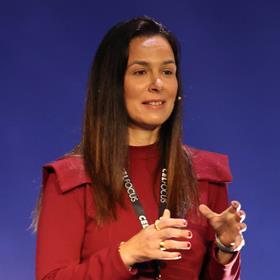
Networks are converging, with technologies including fixed, mobile and satellite coming closer together, and interdependencies are coming to the fore — such as satellites linked to transmission networks, and private networks relying on backhaul connections.
By recognising this interdependence, organisations can better develop cross-domain functionalities and capture synergies as part of an overarching strategy targeting more capable and streamlined operations.
A further part of the challenge for operators implementing AI is that they are not starting with a blank page. Legacy systems proliferate, and cannot simply be jettisoned. They need to be brought into a cloud‑native environment to better leverage AI platforms, but, even more than that, their structures may need to be fundamentally re‑engineered to extract the value that AI and automation can offer.
“ The issue with legacy systems goes beyond merely having accessible data in the cloud. They have not been designed, or the data is not structured, in such a way that could easily allow to realise more potential with AI technologies. ”
Penedo.
These systems need to integrate with modern technology stacks, inventory tools need to be reconsidered, and data access restructured to make the most of cloud and AI potential. These are key considerations for Celfocus when it collaborates with operators to implement new use cases leveraging automated networks, according to Carla.
Setting these foundations begins with understanding the core structures that enable comprehensive modelling and analysis. “Modelling the network topology across different domains as knowledge graphs offers a consistent and flexible view of various domains and service layers”, she says.
For example, increased fixed and mobile convergence can be revealed in performance metrics and configurations, aiding in network issue detection. “This allows for the application of similar analytics and tools across the various domains, driving efficiency and consistency in operations overall”, explains Carla.
This rich data environment fuels the network digital twin, creating dynamic, high-fidelity models that mirror the live network in real-time. This provides a unified view of how different services interact and impact each other, enhancing cross-domain analysis. They also enable predictive analytics and proactive decision-making, allowing network operators to anticipate issues before they affect services and to trace problems across layers and domains. This significantly improves fault isolation and root cause analysis.
Carla believes this area will soon provide notable benefits, with the potential to deepen understanding of network interactions. “It’s not just about pinpointing the root cause in a specific network domain”, she says. “Often, the origin of a problem lies elsewhere, and topology plays a key role in navigating the different layers quickly to identify where to act, minimising customer impact”.
For instance, “if a drop in call quality is detected in the mobile network, the system can trace it back to a malfunctioning transmission node across different network domains” — something that Carla emphasises as truly game-changing.
While embedding AI capabilities into telco operations is clearly an ongoing journey, Celfocus has already delivered successful implementations yielding tangible benefits. “We have real-world experience and lessons learned from projects already underway, while others may still be at an earlier stage”, she highlights.
However, the challenges faced are not purely technological.
Migrating to zero-touch — while valuing the human touch
Carla sees another change that goes beyond technology emerging, as agentic AI and automation keep rising up the agenda.
She detects recognition that enthusiasm for the leap towards zero‑touch networks “may have come a bit too soon”, and sees the sector today embracing a more incremental approach. Clients still want to reach a point where end-to‑end automation is achievable, but also appreciate the importance of bringing people on this journey and developing trust in the new capabilities.
This is a cultural change, she notes, with the priority now to ensure that AI and machine learning technology is augmenting human knowledge and work so that, when “the people in the loop are confident with what it is doing, they can fully automate the processes”.
Here, the implementation of Agentic AI may prove a powerful ally. As described by André Vieira, the Operations Intelligence Offer lead at Celfocus, during a recent discussion on how Vodafone is betting big on the technology, Agentic AI can provide “little helpers for the engineers” in network operations.
“Agentic AI represents the next step in our AI strategy, building on large language models and Retrieval-Augmented Generation. It bridges intelligence and execution by enabling systems to interpret intent, understand context, and automatically trigger actions across different tools”, explains Carla. “Essentially, Agentic AI is an orchestrated network of multiple AI agents that collaborate and adapt dynamically to achieve complex goals”.
This shift is transforming the operating model. Engineers are being augmented to focus on designing experiences through natural language instructions, rather than simply executing actions that require mastery of hundreds of tools.
“ Agentic AI creates a natural, symbiotic bond between engineers and technology — making automation more intuitive and accessible. By simplifying interactions and orchestrating complex tasks seamlessly, it enables operators to focus on innovation and value creation. It’s a new way of working — more collaborative, agile, and intelligent. ”
Penedo.
Such a hybrid approach will be critical as operators seek to move through the levels of network autonomy, and fulfil ambitions to reach Levels 4 and 5 of the TM Forum definitions for autonomous networks, featuring many of the benefits associated with zero-touch networks
Picking the right tools for the job — FinOps
As operators weigh automation and AI benefits against business cases, new tools are proving their worth, according to Carla.
FinOps, focused on the optimisation of cloud spending with operational performance, is showing its potential as a way for operators to run more efficiently, and Carla believes more can be made of its capabilities. “FinOps needs to be more than just shutting down services at night and powering them on in the morning”, she says, “and considering we are talking about moving data and operational processes to the cloud, it does not represent a ‘business case’ if not handled wisely”.
Moving to the cloud can involve hidden expenses that may not be revealed until a bill comes in. Implementing FinOps strategically can help operators understand what is driving costs and take steps to manage them in real time. “FinOps strategy should begin at the design phase, where you select the best tools for the job and ensure they are used when needed”, she emphasises. “Partnerships with hyperscalers are key in this approach, enabling cost-effective choices from the outset and continuous optimisation throughout the project lifecycle”.
Carla notes that operators may not be fully aware of the potential benefits here, adding that Celfocus often proactively brings this approach to projects “because in the end it will deliver even greater benefits”. FinOps is built in to Celfocus’s strategy around any cloud project, and the benefits are already evident. “We have projects where we have reached 40% to 50% cost reduction because of it”, she says.
Focusing on business objectives
When it comes to telco systems, not everything needs to be solved with AI.
In the past couple of years, GenAI has brought AI technology to the forefront of minds. Carla acknowledges its role in creating a sense of urgency about the implementation of solutions in more areas, but she also considers it important to focus on use cases. In this context, Celfocus takes a strategic approach to aligning technology with business objectives, not only being proactive in proposing solutions but also providing advice on feasibility.
“ We have been working extensively on this for over eight years. We know, with confidence based on experience, what works best and what does not work when using AI. The more important thing is to understand when to apply it, because sometimes you don’t need it or it’s not worth it, or the cost does not justify the business case. But when it is applicable, it can make a big difference. ”
Penedo.
Celfocus’s approach to building a project or solution begins with gaining a clear understanding of baseline metrics that the client wants to improve, whether around customer experience, or fault detection and resolution times.
The company has also developed a range of frameworks in areas including data and AI to support projects such as moving data to the cloud, or proactive and predictive analytics. Used alongside GenAI capabilities to accelerate development, these open-source tools are provided to clients “at no charge and with no licences” and can be reused or further developed across projects. This reflects Celfocus’s commitment to a more holistic approach to client projects and long-term relationships.
Partnership multiplier
Celfocus growth, in terms of its size and revenue, has been considerable in recent years, as recently outlined by Chief Executive Álvaro José Ferreira.
This expansion and deepening of capabilities has enabled the business to refine its structure to focus on the key fields of Cognitive Automation, Data & Analytics, and Digital, develop vendor partnerships (particularly with hyperscalers), and take the business into a new phase.
As operators become cloud-native, and more AI‑enabled, such partnerships will become ever more important, according to Carla, who suggests Celfocus is well placed to become not only a bridge between the worlds of the operators and the tech giants, but also to act as a springboard for innovation involving both.
Celfocus, she notes, has significant relationships with AWS, Google and Microsoft Azure, with strong understanding of the technology emerging from the hyperscalers as well as the business needs and priorities of operators, enabling it to help draw up efficient and cost effective solutions for cloud deployments.
As a valued partner, Celfocus is also working with IT leaders on innovative projects in areas including network digital twins, Agentic AI, and telco cloud — leveraging its telco experience to create joint offerings.
“ For hyperscalers, we bring our extensive experience in telco space to understand our clients’ specific needs. We have in-depth technical know-how of hyperscaler product capabilities, and through collaboration we can design tailored innovative solutions that deliver maximum value. ”
Penedo.
Celfocus is also experienced in managing complex projects supporting greater adoption of cloud platforms by operators, with Carla citing the pioneering and award‑winning work undertaken with Vodafone and Google on migrating the cognitive components of the operator’s Global Network Operations Centre to a secure cloud, making it the primary source of network AI-based capability.
Work with Vodafone continues, with Carla looking forward to TM Forum’s DTW Ignite event in Copenhagen. João Miguel Antunes, head of Autonomous Networks, will be presenting alongside Emilio Varas, who leads on Customer Fulfilment for AI & Operations Improvement in Europe at the operator. The pair will be considering how AI and machine learning are enhancing field services, notably with ‘smart technician dispatch’ that can improve first-time resolution rates and in turn boost customer experience.
The overarching theme for Carla across projects with partners making autonomous networks a reality is the bringing together of client, partner, and technology strengths with a clear commercial vision and an actionable plan for implementation. At FutureNet World, on stage with Telenet, she summarised her belief in the key elements for success in three words, “adoption, adoption, adoption”. “Technology must be adopted and used by people to genuinely serve their needs, not the other way around.”, she concluded.
Tiering it up
Celfocus’s operator ties are considerable. Since spinning out of a joint venture with Vodafone in 2020, links with the European major remain close. While the two businesses literally remain neighbours, it is ongoing delivery that ensures the relationship continues, according to Carla, alongside a shared “spirit of collaboration” and a deep understanding of the challenges faced by operators. “Trust and consistent value are what sustain a truly strong and enduring partnership.”, she believes.
In the subsequent five years, Celfocus has drawn in other tier-one clients through its grasp of the operator big picture and the technology requirements of sector transformation. “Since day one, we engage in insightful, in-depth conversations with our clients, demonstrating how we can deliver the right solutions for their specific challenges. This ability to ‘show the talk’ has been a key differentiator in every new engagement in this sector and is essential for capturing the interest and trust of telco operators”, Carla says.
Topics
- AI/GenAI/ML (artificial intelligence, agentic, machine learning)
- Álvaro José Ferreira
- André Vieira
- Automation
- Autonomous networks (zero-touch)
- AWS (Amazon Web Services)
- Carla Penedo
- Celfocus (Novabase)
- Cloud
- Convergence
- Digital twin
- Europe
- FutureNet
- Google Cloud
- Industry Voice
- João Antunes
- Microsoft
- Network & Infrastructure
- Network Operations Centre (SOC)
- Operations
- Partnerships & Alliances
- Private Networks
- Technology
- Telenet
- TM Forum (TMF)
- Vodafone Group



